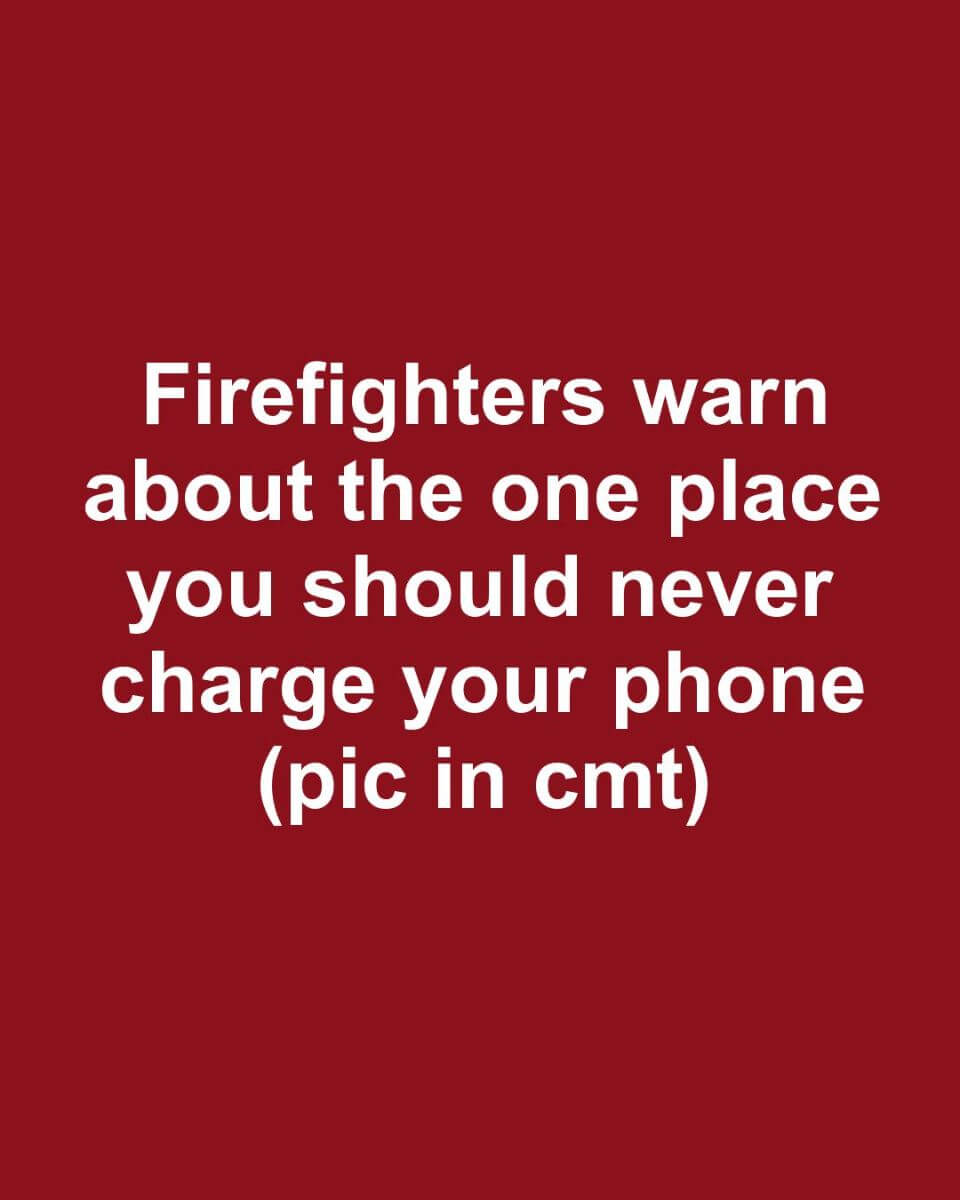In today’s digital world, smartphones have become essential tools for communication, entertainment, and even productivity. While they offer incredible convenience, using them safely—especially when charging—is something many people overlook. Although charging a phone may appear to be a simple task, it carries potential dangers when done carelessly. Fire departments across the nation are increasingly warning about the hazards associated with unsafe charging habits and encouraging the public to take simple precautions to avoid accidents.
Understanding the Risks Associated with Charging Devices
Charging a smartphone involves transferring electrical energy, which naturally produces heat. When this heat isn’t managed properly, it can lead to overheating, battery malfunction, or even fires. These risks become more severe with the use of poor-quality chargers, frayed cables, or charging in places that restrict airflow. Smartphones typically use lithium-ion batteries, which are sensitive to extreme temperatures. When overcharged or damaged, these batteries may become dangerous.
Common Places People Charge Their Phones
People tend to charge their phones in a variety of settings: at home, at work, in cafes, or at airports. Typical charging locations include nightstands, desks, kitchen counters, or inside cars. Although these spots may seem harmless, the safety of charging there depends on factors like the condition of the charger, the phone, and the environment around it.
The One Place You Should Never Charge Your Phone
One of the most dangerous spots to charge a phone, according to firefighters, is on or under a bed—especially beneath a pillow. This is because soft materials like bedding can trap heat, stopping it from dissipating properly. Over time, this heat buildup can lead to serious overheating issues. The risk increases with prolonged charging, particularly when the device is left unattended during sleep, a habit that’s especially common among teens and young adults.
Firefighters’ Insights and Warnings
Emergency responders caution that charging a phone in bed can lead to devastating consequences. There have been numerous incidents involving phones overheating and sparking fires, sometimes resulting in property damage or injury. Firefighters advise placing phones on flat, hard surfaces to allow proper airflow during charging. They also emphasize using certified chargers and steering clear of worn or broken cables.
Real-Life Incidents and Case Studies
Several real-world cases illustrate the risks of poor charging habits. In one instance, a teenager’s phone caught fire while charging under a pillow, causing a mattress to ignite. Thankfully, smoke detectors alerted the household in time. In another case, a phone left charging on a bed overnight led to a minor fire and widespread smoke damage in the bedroom. These examples serve as a sobering reminder of how serious the consequences can be.
Safety Tips for Charging Your Phone
To charge your phone safely, always use the original charger or one that is certified for your device. Avoid placing your phone on soft furnishings like beds or couches while it’s plugged in. Use a firm, level surface, and don’t charge your device while sleeping or when it’s out of sight for long periods. Regularly check your charging cables and plugs for wear and tear, and replace damaged components. Keep all flammable materials away from the charging area to minimize fire risk.
Alternative Safe Charging Locations
Safer options for charging include tables, countertops, and work desks—any hard surface that allows air to circulate. You might also consider a charging dock or station that organizes multiple devices safely. If you need to charge overnight, use a nightstand away from bedding and pillows, and make sure the space is well-ventilated to reduce heat buildup.
Conclusion and Final Recommendations
Safe charging habits are critical to avoiding fire hazards associated with smartphone use. By steering clear of dangerous locations like beds and using only approved charging accessories, you can significantly lower the risk of overheating and fire. Firefighters continue to emphasize the importance of smart, safe charging practices. A few mindful steps can protect your device, your home, and your loved ones—ensuring that your smartphone remains a helpful tool rather than a hidden danger.
